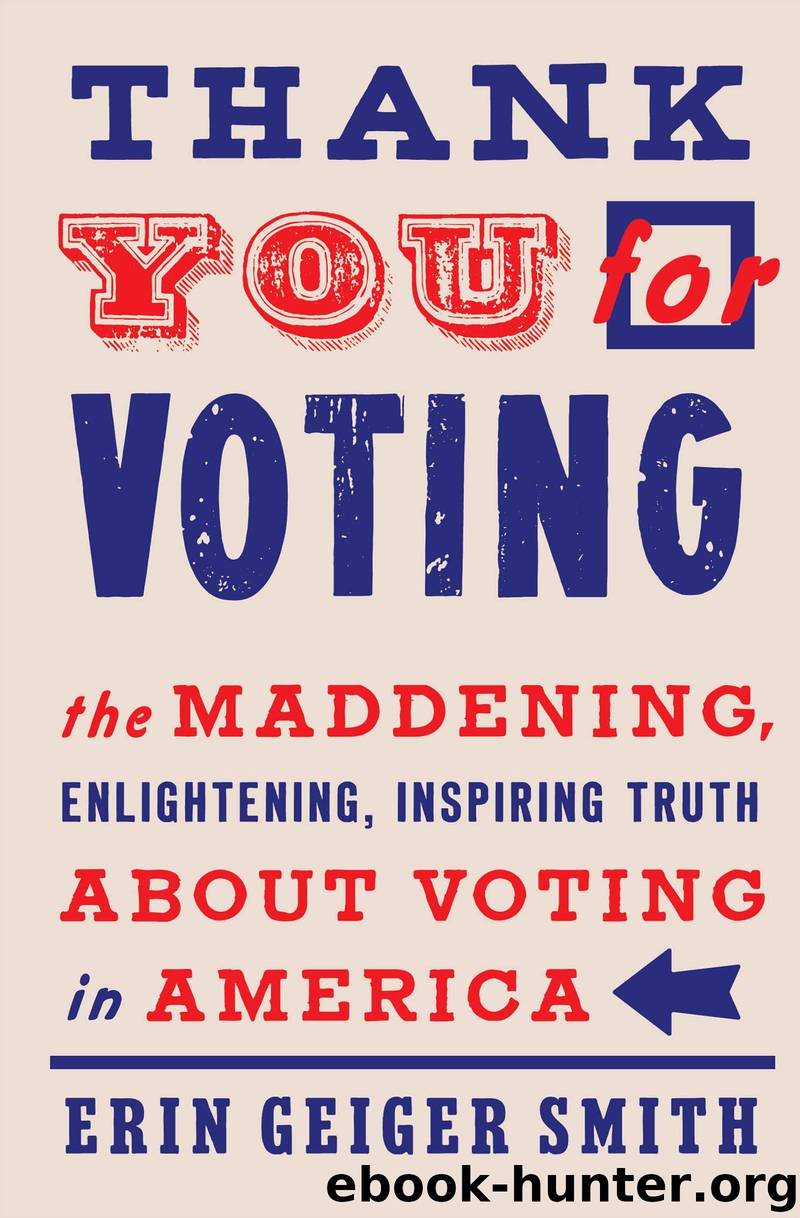Thank You for Voting by Erin Geiger Smith

Author:Erin Geiger Smith
Language: eng
Format: epub
Publisher: HarperCollins
Published: 2020-05-04T00:00:00+00:00
* * *
VOTING LANGUAGE FACTS
* * *
* * *
The fashion writer Teri Agins advised colleagues to sprinkle “chocolate chips” throughout their stories—tidbits that people would want to share with others. Below are conversational treats handy to know during election season.
Suffragette—It’s often used as a default name for those who fought for women’s suffrage, but it’s more accurately used only for British women who fought for a woman’s right to vote in that country. British journalists first used “suffragette” to make fun of the women and belittle their cause, “-ette” being a suffix the French use to describe something small. Though it originally had a negative connotation, some British women decided to adopt the term. The word was also applied in a derogatory way to American suffragists, but it never gained popularity among women in the United States in the same way.
Ballot—This word also derives from a diminutive—ballotta is the Italian word for little ball. In ancient Greece it meant pebbles in an urn; during the Italian Renaissance, people would vote with small balls, often colored for a particular candidate. Casting their ballotta, if you will. Ballotta became “ballot” in British English. One meaning of “cast” is to throw forcefully, though I’ve seen no research indicating voters in Venice tried to toss their ballottas particularly hard or from a great distance.
The government-issued printed ballot, and voting in “secret,” came along much later. Historian Jill Lepore pegs 1634 as the first time the Massachusetts governor was elected “by papers.” But, she adds, “Well after American independence, elections remained widely the stuff of corn and beans and hands and feet.” Kentucky voted by voice until 1891.
Party ticket—Even once ballots were on paper, people for a long time brought their own paper to use, or got them from partisans. Pre-printed ballots that looked like train tickets would endorse all candidates from one party—thus “party tickets”—so voters could participate even if they could not read or write. The government-issued ballots as we now know them are an import from Australia, believed to come from an 1856 law and adopted by the British Parliament in 1872. Massachusetts led the “papers” charge again in 1888, becoming the first state in the nation to pass a law requiring the Australian ballot.
What seems reasonable now was a discrimination tool then; the government-issued paper ballot discouraged those who couldn’t read from participating.
Chad—Who can think of a paper ballot without thinking of its most infamous failure: in the 2000 presidential election, which left Florida officials holding ballots up to the light, squinting and making controversial calls over whether a hanging “chad” meant a vote for George W. Bush or Al Gore. Merriam-Webster defines chad as “small pieces of paper or cardboard produced in punching paper tape or data cards.” Its first usage is listed as 1944, but its origin is unknown.
Other words first used in print that year include the very fitting “gobbledygook” and also “dead presidents,” as in cash. (Bonus chocolate chip: during a U.S. Supreme Court argument over partisan
Download
This site does not store any files on its server. We only index and link to content provided by other sites. Please contact the content providers to delete copyright contents if any and email us, we'll remove relevant links or contents immediately.
The Secret History by Donna Tartt(18852)
The Social Justice Warrior Handbook by Lisa De Pasquale(12143)
Thirteen Reasons Why by Jay Asher(8800)
This Is How You Lose Her by Junot Diaz(6796)
Weapons of Math Destruction by Cathy O'Neil(6148)
Zero to One by Peter Thiel(5690)
Beartown by Fredrik Backman(5600)
The Myth of the Strong Leader by Archie Brown(5427)
The Fire Next Time by James Baldwin(5250)
How Democracies Die by Steven Levitsky & Daniel Ziblatt(5129)
Promise Me, Dad by Joe Biden(5088)
Stone's Rules by Roger Stone(5027)
A Higher Loyalty: Truth, Lies, and Leadership by James Comey(4847)
100 Deadly Skills by Clint Emerson(4843)
Rise and Kill First by Ronen Bergman(4705)
Secrecy World by Jake Bernstein(4651)
The David Icke Guide to the Global Conspiracy (and how to end it) by David Icke(4628)
The Farm by Tom Rob Smith(4439)
The Doomsday Machine by Daniel Ellsberg(4419)
